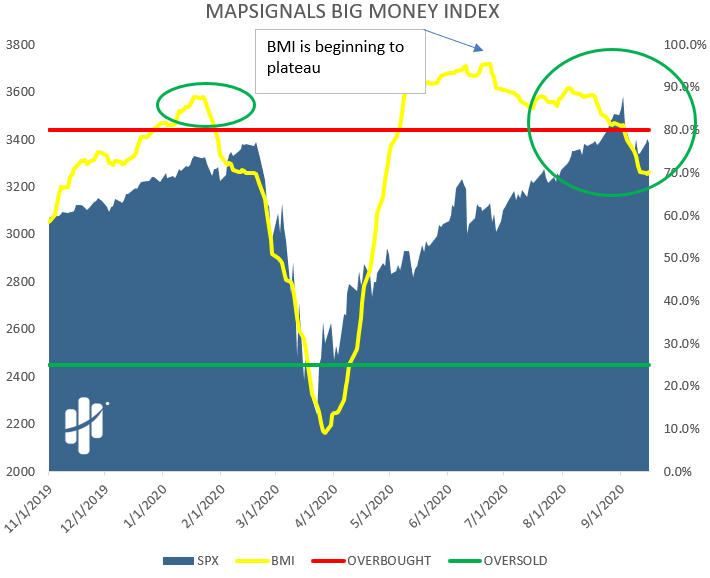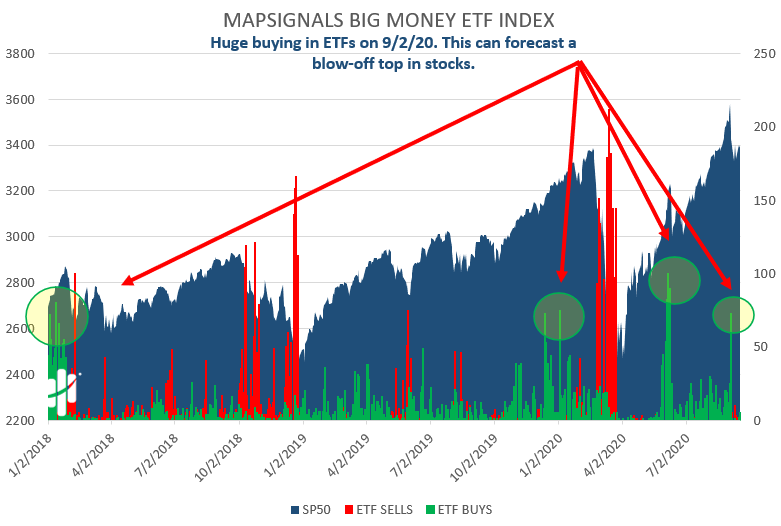
Weak Hands
New traders have to learn the ropes. There’s “no such thing as a free lunch.”
Weak hands is a financial term defined as new investors who lack conviction in their trades. Basically, they are the traders that see an opportunity on Wednesday but then see a disaster on Thursday.
Monster bull markets often bring out the weak hands. It works like this: stocks begin to rise. Then investors take notice and pile in. Prices go higher. People start feeling left out. Emotion kicks in. People start buying with less and less regard to logic. Valuations go out the window. Hot IPOs and SPACs become all the rage. FOMO fuels the fire. Finally, weak hands come in feeling emboldened with false confidence.
Eventually though, Mr. Market teaches all new traders a lesson.
The pendulum swings both ways when it comes to risk. Uncertainty means volatility. And volatile markets eventually swing into smooth upward trending markets synonymous with certainty. Investors become certain they will make money buying stocks. And when making money is just too damn easy, stocks gap higher day after day. Then the FOMO creeps in allowing the weak hands to pile in.
We saw it happen and sounded the alarms. The big tip-off was with ETFs. Animal spirits were howling on September 2nd. The final buyers (retail) got sucked in and they pushed their chips to the center. As we’ve shown before, when ETFs get bought in size, be careful. Early September notched yet another example in the ever-growing data of market history.
Why does big ETF buying mean a red flag?
Because, Big Money tracks this kind of activity. Huge funds look for retail buyers full of glee and hope. When pros see hints of greedy buyers, they test the liquidity of the market. Meaning: a pro may sell a little stock to see how it trades. If it gets gobbled up immediately, it’s not time to sell. But when they sell and bids are soft, meaning it’s harder to sell – that’s when pros press: they start selling with abandon.
They push stocks down to capture profits on their shorts. It gets violent and ugly fast. So, when big money saw investors clamoring for ETFs, they knew hopeful buyers were here. It’s no mystery to us that the Tech market fell 10%+ soon after that signal.

In accounting, there’s something called LIFO- Last In First Out. It’s an inventory accounting method. You sell the merchandize that most recently arrived first. Well, when ETFs got bought bigly, the “last in” quickly became the “first out”, as pro traders shoved prices down in their faces.
At MAPsignals, we actually see their pain as opportunity: We love buying the best stocks at discount prices.
So, was this hopeful buying a signal that the market is headed lower for longer?
We don’t have the all-clear signal yet for markets – but, our data suggests the bears’ days are numbered.
Big Money Index Reaches 4 Month Lows
The Big Money Index has sagged for weeks. That’s due to big money stock buying slowing, coupled with a moderate increase in selling. But that doesn’t necessarily mean the market as a whole is getting sold.
In fact, there’s a rotation happening. Technology leadership is slowing, while sectors like Industrials, Materials, & Discretionary are attracting capital.
Overbought markets can be described as when all stocks rally…the good and bad ones. That clearly is not the case currently. The BMI has been falling:

A soft BMI normally leads to lower market prices. And deteriorating market internals make weak hands easy to spot.
Our data indicates that this is a technical pullback. That means the market got overheated and needed to vent some steam. It’s natural, normal, and needed. That’s why we see this as an opportunity as opposed to pain ahead.
A good flush-out tends to scare off new inexperienced money. Now is the time to have those buy lists ready.
Big Money ETF Action Quiets Down
Retail investors love ETFs. Retail is an individual, non-professional investor trading securities through a broker online or otherwise. When they plow in with conviction, stock markets tend to pullback soon after.
Ironically, just when “mom ‘n pop” investors feel it’s safe to get in, volatility comes like a bandit to steal their confidence away from them.
Since the big chunky ETF buying happened 2 weeks ago – buying has slowed dramatically:

That’s right in line with what our data said last week in Summer’s Over. In other words, we expect choppy waters near-term.
And that’s good! We’ll be using this time to eye outlier stocks on sale. We’ll use the weak hands in the market to our advantage.
Weak Hands Equal Opportunity
When fear starts to grip a market or more specifically a sector, like Technology, prices can get out of whack quickly. Like an overbought market when both good and bad stocks go up, fear whacks both good and bad stocks. For us, that’s when things get interesting…when the bids fade.
When no one wants to buy is a blissful opportunity.
When times get tough, as an investor, you can choose to either strap on a helmet or hide your head in the sand. But, only one makes money over the long-run… significantly more than the other.
This reminds me of when we would experience volatile days when we worked on trading desks. Being salesmen, our job was to bring big order-flow to our traders. We would drum up the interest and our in-house traders would make a market… i.e. market-makers.
For example: we would be asked by a client for a price on five million shares of an obscure illiquid ETF. Our trader would have to show a bid, where s/he was comfortable to buy, and an offer at a comfortable sell level. Oddly enough, some traders loved volatility, and others loathed it.
Said another way, one trader would strap on a helmet, while another would clam up…the latter didn’t want the risk.
I’ll let you decide which trader made the most money year after year. Here’s a hint: it wasn’t the one with the weak hands.
Bottom line: fear will cost you long-term. Don’t let a little volatility bounce you out of great stocks. If you are sitting patiently, waiting to jump in, bravo! Take your time… there’s always opportunity.
When big sell-off days come, we like to pick our spots. We take pride in it. Afterall, the seller on the other side might be some poor weak hand that just got his confidence scorched.
When they are begging for the pain to stop, we wink and nod and happily alleviate their pain.
Call us stock anesthesiologists.
Weak hands in pain create great opportunities.
We’ll be ready…will you?
